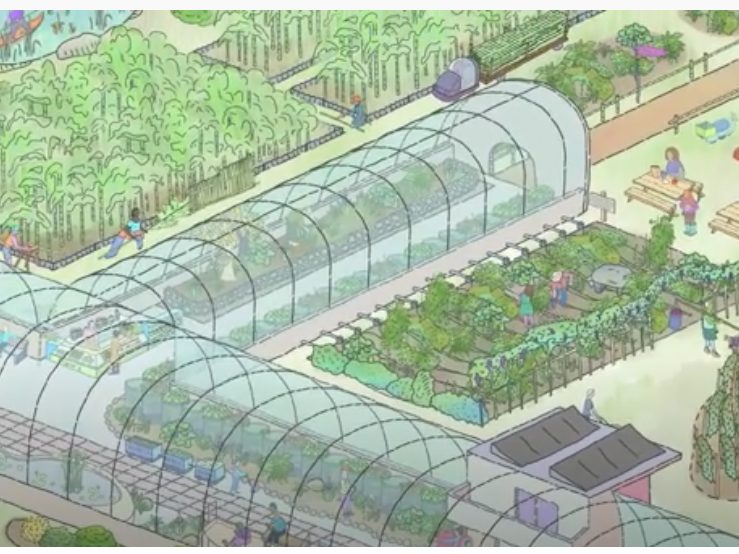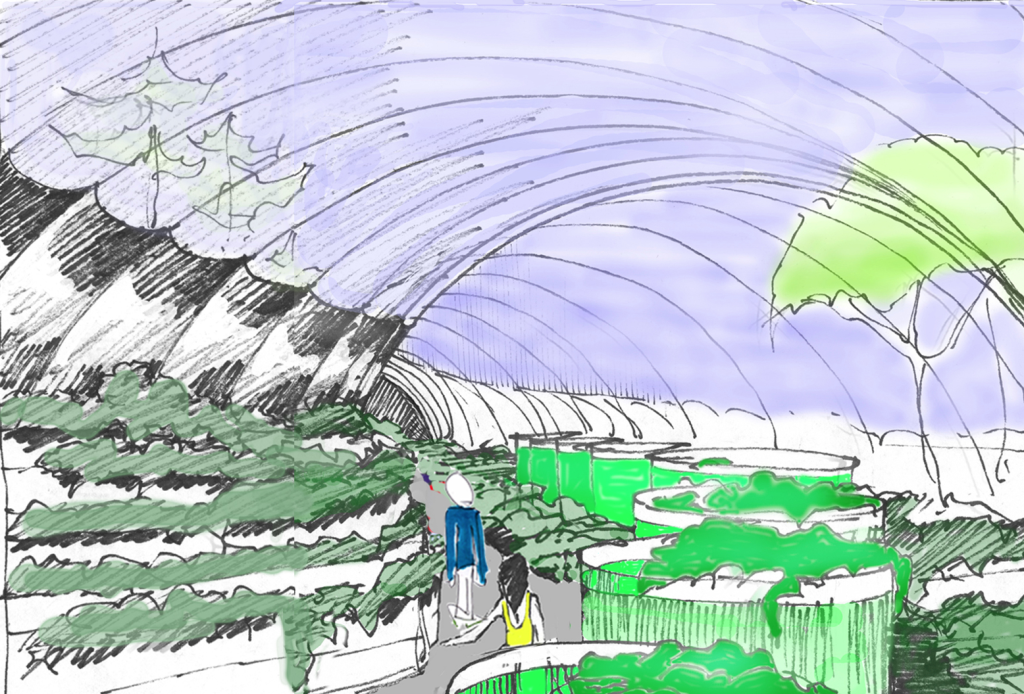The following are Earle Barnhart’s comments on the Town of Falmouth’s Comprehensive Wastewater Management Plan. He expressed these thoughts to a hearing held by the Cape Cod Commission on December 4, 2013 and submitted them to the Massachusetts Department of Environmental Protection as part of its review process.
Introduction
My name is Earle Barnhart, and I have been a resident of Falmouth for 41 years. I am the Executive Director of the Green Center, an educational non-profit organization that focuses on ecologically-sustainable methods of providing basic human needs of food, water and shelter. I am a member of the ‘Citizens for Economic and Ecological Sustainability’ of Falmouth
I am currently a member of the Cape Cod Commission’s 208 Plan Working Group for the Upper Cape West and South Watersheds. I have been closely following the development of this CWMP for the past 3 years.
The document submitted by the Town of Falmouth at this hearing is titled “Comprehensive Wastewater Management Plan”. However, in its present form, it is not even remotely comprehensive in analyzing and addressing Falmouth’s wastewater problems.
Freshwater Ponds
If this document were comprehensive, it would suggest solutions to Falmouth’s 141 freshwater ponds, most of which have the same water quality problems as Falmouth’s coastal ponds.
Public Water Supply
If this document were comprehensive, it would analyze the interactions between Falmouth’s public water supply and the use of expensive, pure water in flush toilets and sewer systems, comparing the amounts of water used and the costs of water used by sewers and all the other alternatives.
Permanent Ecological Solutions
If this document were comprehensive, it would focus on ecological processes and ecological solutions.
In nature, organic wastes move in cycles, and the nutrients are recycled and reused over and over again.
The fundamental ecological error of our community is that we put human wastes into water in the first place. Experience has shown that it is virtually impossible to separate them out again. In centralized sewers systems, many of these organic wastes go into pipes on a one-way trip to the ocean. These nutrients are never recovered or reused again – they are wasted and lost.
The mantra of sewer engineers, that “nitrogen is the problem”, is a gross over-simplification.
If this document were comprehensive, it would not focus on only one nutrient component – Nitrogen. Ecological cycles do not operate one chemical at a time, and cannot be successfully managed one chemical at a time.
Impacts on CO2 and Climate Change and Long-Term Planning
Massachusetts law requires that every government project ”….shall use all feasible measures to avoid or minimize damage to the environment.”
If this document were comprehensive, it would take along term, global perspective, including environmental damage that leads to climate change and sea-level rise.
Our civilization is entering a climate-change ‘end-game’. There is mounting evidence that if society continues with business-as-usual, we will burn through all our remaining fossil fuels in a final burst of consumption and waste, resulting in permanent droughts, global famines, species extinctions and human catastrophe. If you don’t believe these predictions, you’re not paying attention to many troubling global trends.
This document does include a section on climate change, but focuses mostly on what might occur after climate change happens, such as storms and sea level rise.
A different section supposedly compares the Carbon-dioxide emissions from the ‘Present Sewer Facility’ to the ‘Proposed Sewer Facility’; however, the chart says that the emissions will be exactly the same – identical to a decimal point. This may possibly be true, but it is very hard to believe. It is also hard to tell if the CO2 embedded in the materials of the sewer infrastructure is counted in the calculations. I would like to see a lifecycle analyzes of CO2 emissions from a new sewer, compared to the other various alternatives.
If this document were comprehensive, it would not use 20 year and 40 year time frames in a world where we must reduce its CO2 emissions by 80% in the next 10 years to avoid global ecological catastrophe.
We should ideally move immediately to the most sustainable ecological solutions, including shellfish in the estuaries and nutrient-recovering eco-toilets in all homes.
Future Environmental Problems of Centralized Sewer Technology
If this document were comprehensive, it would address the likely modes of failure of sewer infrastructure, if subjected to ocean rise, to possible future restrictions on CO2, and to possible future restrictions on exporting sludge to other people’s communities.
Chemicals of Emerging Concern (CEC’s)
If this document were comprehensive, it would address the problem of persistent and toxic chemicals in wastewater, and analyze which technologies could most effectively manage and mitigate those chemicals.
Adaptive Management and the ‘Parallel Path’ of Alternatives to Sewers
Wastewater planners call sewer technology the ‘traditional’ or ‘conventional’ solution. They dismiss ecological solutions, as unproven ‘alternatives’. Our planners lump these other solutions together as a ‘parallel path’ to sewers. This view results in planning to build sewers first (using virtually all possible available money), and then, later, maybe, consider adding ecological, ‘green’ infrastructure.
However, recently the Cape Cod Commission’s 208 Planning process has clearly shown that some ‘green’ alternatives, such as oyster culture and eco-toilets, can easily meet the TMDL nitrogen targets without sewers, and are cheaper than sewers without even including the many co-benefits and recovered resources of the green alternatives.
Based on this new information, the time for Adaptive Management is now, not later, not in 3 years, and particularly not after spending $50 million of taxpayers’ money on a permanent, irreversible sewer. Falmouth should step off of the current path of sewers technology and move onto the cheaper, more sustainable parallel ecological path.
Conclusion
In conclusion, I recommend that you reject this document in its current form, and send it back to:
1) focus attention on Falmouth’s 141 freshwater ponds, most of which have the same water quality problems as the coastal ponds.
2) do an analysis of the relationship between Falmouth’s public water supply costs and each potential wastewater solution.
3) add a clear, complete analysis of the projected carbon-dioxide implications of each potential wastewater alternative.
4) start adaptive management now; eliminate the most expensive option of constructing more sewer infrastructure.
Three years ago, when we first brought up objections to sewers, one member of the Water Quality Management Committee told us “You know, you’re standing in front of a freight train.” He was right. It has been remarkably hard to slow or stop the relentless drive towards sewers by our planners and government officials. A cynical person might come to believe that sewers are favored so strongly because they financially benefit large engineering corporations and real estate investors.
So, rather than getting out of the way of the train, we have put our efforts into warning the passengers of the train, the citizens of Falmouth, that their train is likely to take them over a financial and ecological cliff. Our hope is that our comments will eventually be heard and understood by Falmouth’s citizens, and Falmouth’s children, who ultimately will have to pay the costs for the plans in this document, and for your decisions about it.
PS: Public notification and seeking public comment was ignored.
There was a dismal and pathetic lack of public notification of the 12/04/13 hearing.
Notice to the public regarding the hearing in Falmouth was virtually non-existent, – notice was not in the local newspaper, and the neighborhoods most affected by the proposed sewer project and costs were not notified, nor present at the hearing.





Share your thoughts!